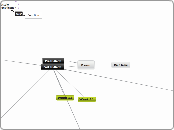av Savannah Dares 11 år siden
281
_midway
The text discusses the interplay between design and culture, emphasizing the role of designers in shaping everyday life through their creations. It considers the importance of understanding the audience'

av Savannah Dares 11 år siden
281

Mer som dette
vdrv
2.>
C.>
+ SIZE
SHORTCUT DOESN'T WORK
2.<
d.
C.<
(subtopic)
(parent topic)
TOPIC AFTER (U/L)
DELETE
- SIZE
c.a.DOWN
DOWN
Method
Products and Services
Meet customers' needs
Customers
"work-around" conditions (design)
Adapt
Cope
Habits
Don't always know what they want
Market Research
Lack
Useful?
Experience
Ability to
Imagine
Innovate
Communicate
Perceived
Real
Developed
Late 1990s
User-Oriented
Empathetic Design
We should stop practicing.
Visual Language
Social science
Since 1960s
Theories
Cognition
Emotion
Research Methods
Transformed design practice
Foreground
Users
Needs
Interactions with
Technology
Objects
Mini Cooper
Positive emotional response
People
To Appearance
Mediocre
Driving Performance
Critics
BMW
Behaviours
1 Lifestyle Consumption
2 High-tech aesthetic
3 Dystopia
4 Human-tech thinking
5 Elastic Mind
Bodies as farms
Cultivate clinical/ pharmaceutical products
Eyelashes/ hair
Stem cells
Future Farm project
Poverty
Future World
Michael Burton
2006-07
Challenge
Translate science/tech
Meaningful/useful for everyday users
While aware of designer's social/ethical responsibilities
Consumption for own sake
Economic inequalities
Environmental destruction
Perceived Positively
and marketed
1st half of 20th cent.
Problems
Solutions
Human-tech revolution
Humans misunderstanding/ misusing tech.
Not functional
Despite innovation
Ways of
Potential Cosequences
Design must account for
Accounts for people's
Expectations
Psychological habits
Traditional approaches
Humanistic
Mechanistic
Kim Vincente
Consequences
Introducing new tech.
to culture
Fear/concern
Machines taking over
Growing in 1960s
Indications
Sociological studies
Built Environments
Most advanced tech
Suburbs
Office Buildings
Alienation
Dystopian
Films
Novels
Design Responses
Postmodern Period
High-tech aesthetic
Japanese electronics
1970s
Lifestyle consumerism
Relationship
Experiences
Designed Goods
Consumers
Rise
1960s-80s
Post War Period
Modernist Ideals
Greater design involvement
Differentiation
Marketing
Between types of products
More Products
Increasing focus on consumer
Standardized mass production
1940s-60s
1 Papanek's Meaninful Design
2 Appro-tech
3 Activist Design
4 Catalysts and Engagement
User-Oriented Design
Design Intelligence
Appropriate Technologies
Process- centered
Results- driven
Users = co-designers
On-site assembly
Local materials
Solutions for basic problems
Focus
Field of Engineering
Appro-Tech
Assess
Method of Analysis
Impact
Seperated in design process
Non-obvious consequences
Long-Range
Short-Range
Fuction
Emily Pilloton
2008
Project H Design
a manifesto
Designers as Activists
Focus of Design
Must Deliver
Product (form & function)
Catalysts & engagement
Goal
Fulfill
Aesthetics
Tool to evoke emotion
Usually, to please audience
Response
Association
Psychological Associations
Values
Dislike
Like
Conditioned since childhood
Telesis
For deliberate goal
Using natural processes
Cultural/Social Appropriateness
Genuine Needs
Genuine needs of humankind
Tend to satisfy wants
Use
Not the purpose/function itself
"The mode of action by which a design fulfils its purpose"
intention
Way in which
"Does it work"
Consider
Replace value-laden terms
Obscure
?
Nice
Beautiful
Victor Papanek
Radical, Inventive Aprroaches
Tools
Methods
Materials
Critiuqed
That which works well does not out of necessity look well, too
Just two of many aspecs of function
Functionalism
2 Consumerist Society
3 Baudrillard's Consuming Images
4 Lifestyle
5 Empathetic Design
Modernity
Speed Dynamism Efficiency
Machine aesthetic
Streamlining
Market Economy
1930s
US economy
Shift
Abundance
1950s
spread to other economies
Me
Erika
Post
Contemporary Design
Design
Lifestyle Identification
Jean Baudrillard
sociologist lens
through images
The image over the object.
"The Meaning of Design"
Vitta and Nelles
Role in shaping
Implications
ethical
social
Emerged
Prior
Fordism
Model T Ford
"Any color as long as it's black"
1920s
Styling
Expanded consumer choice